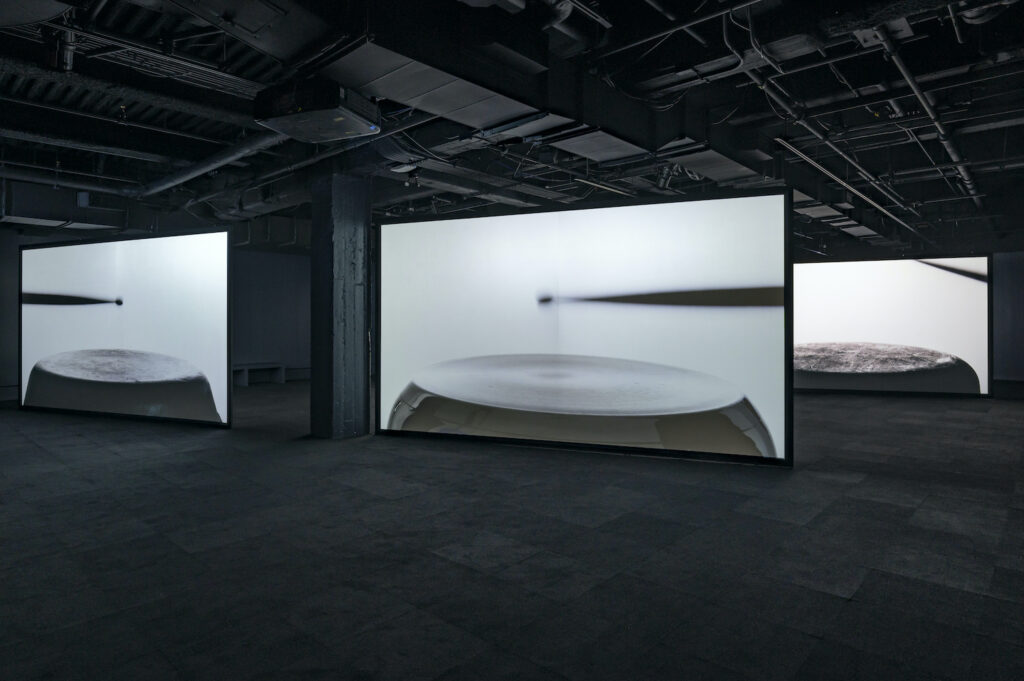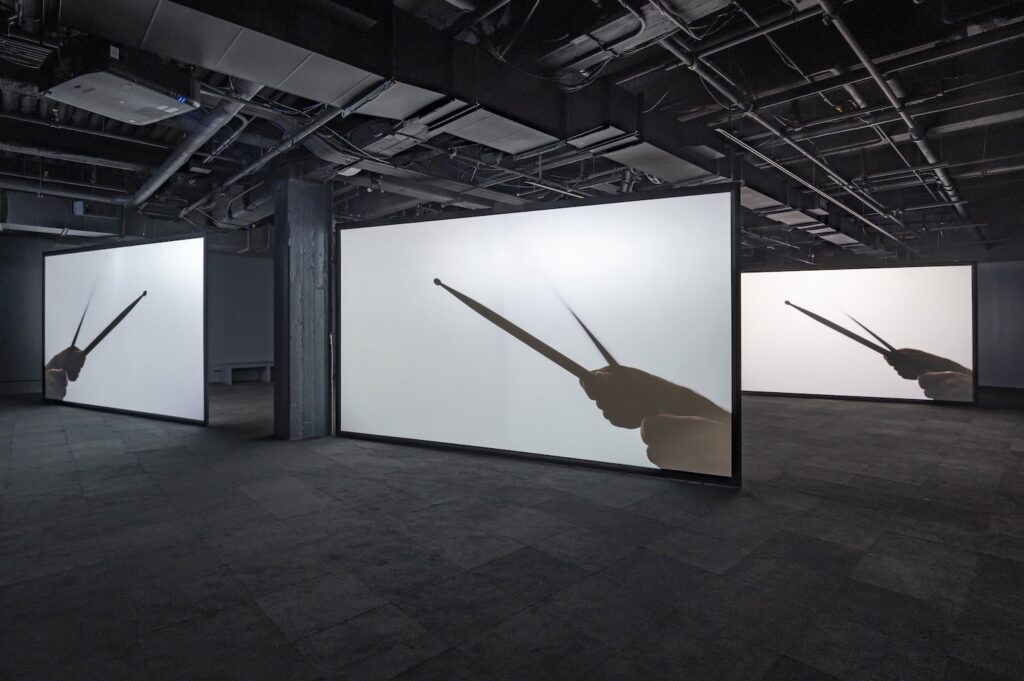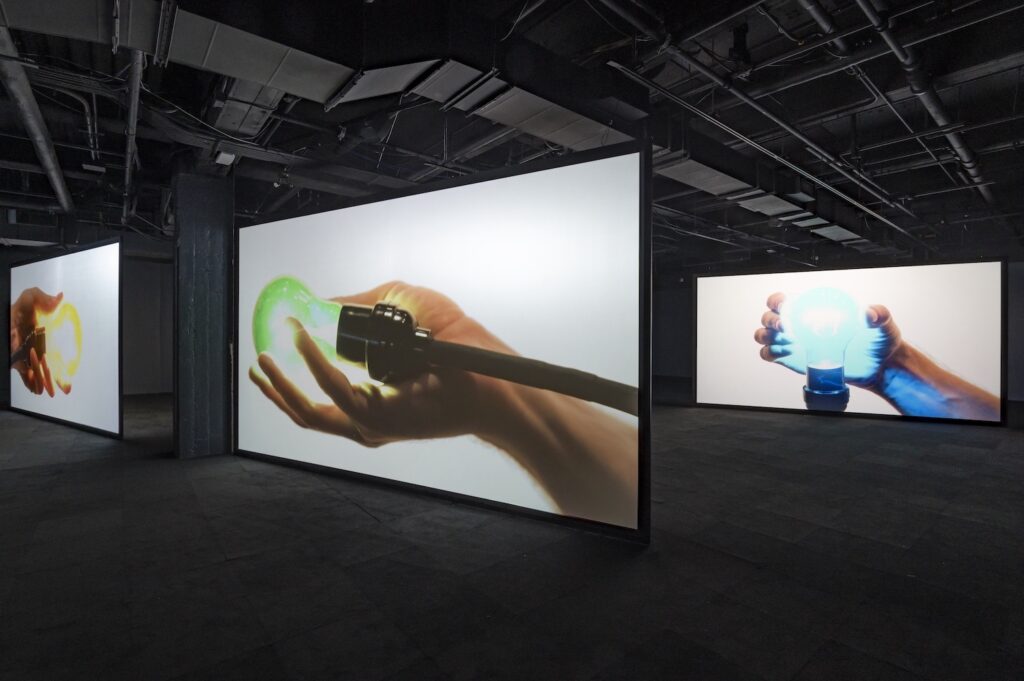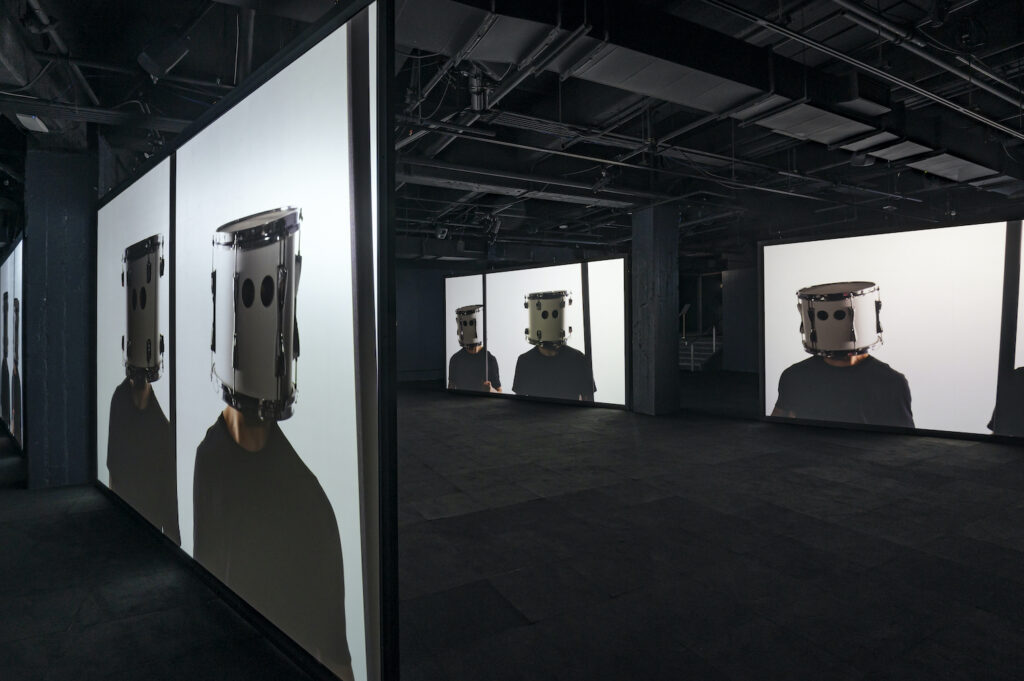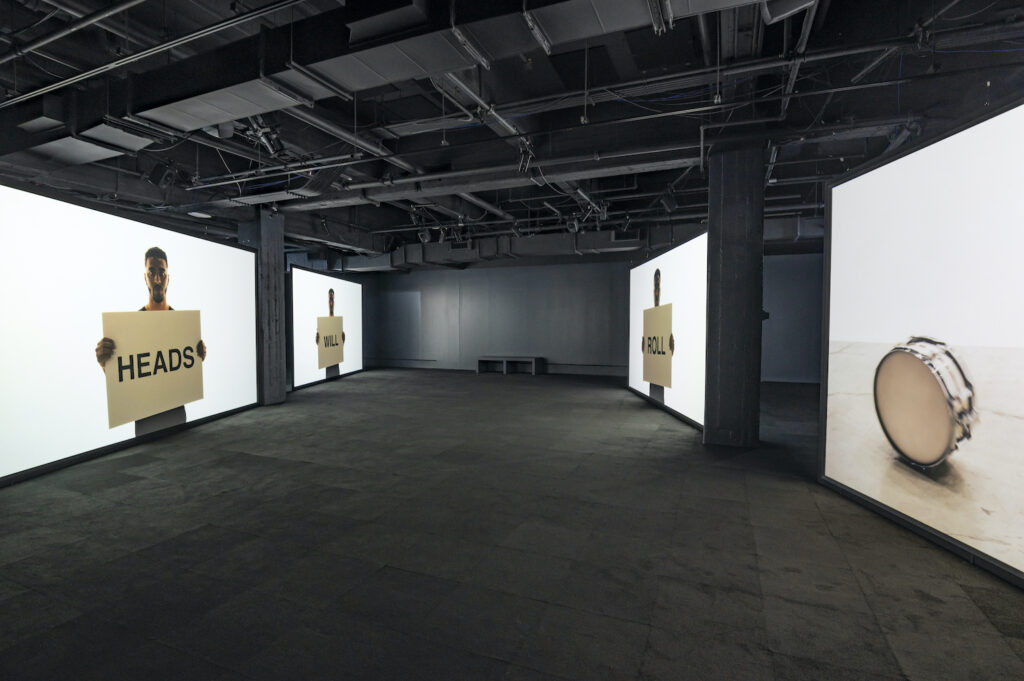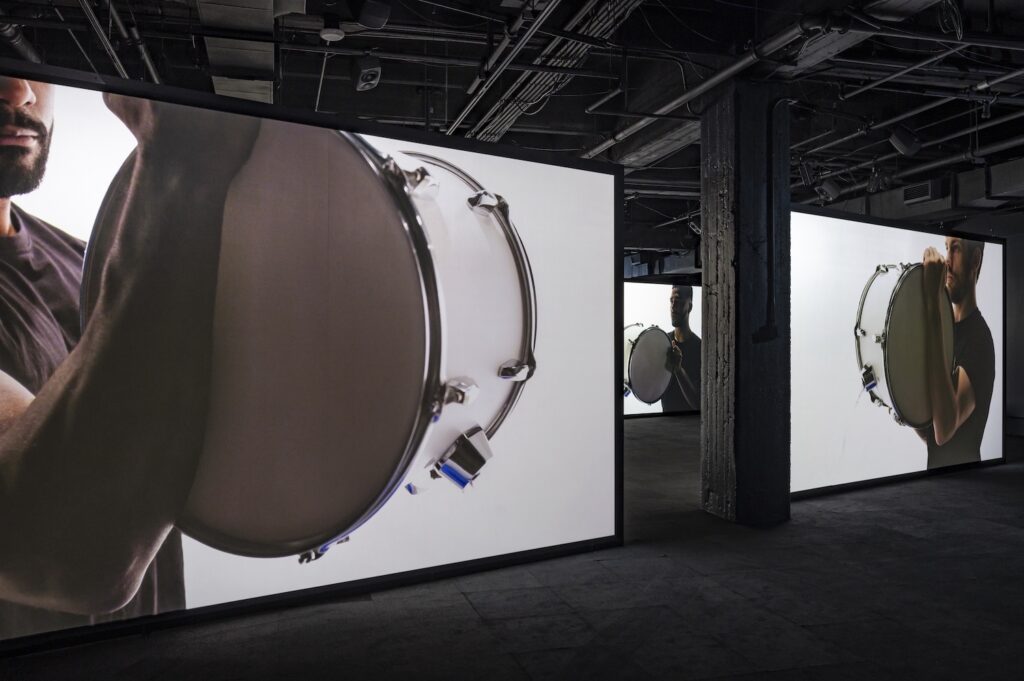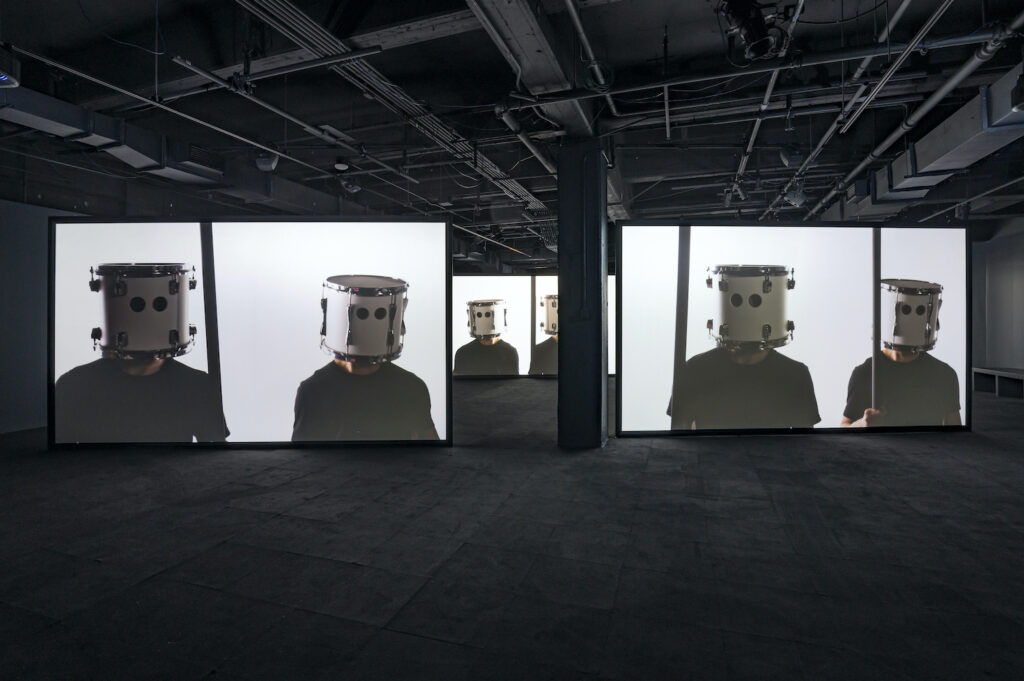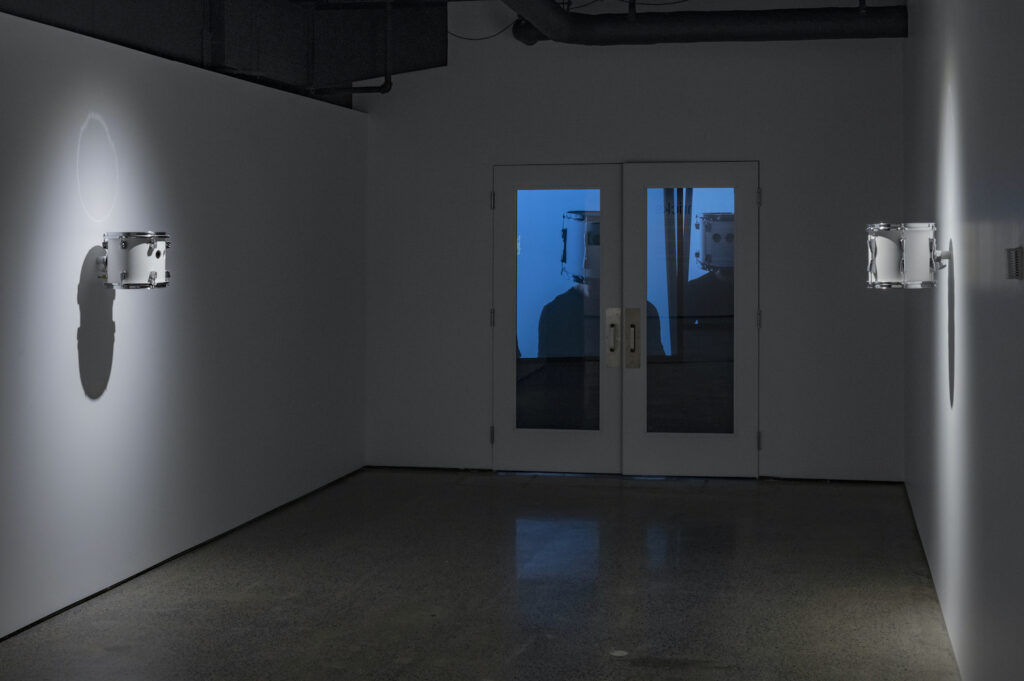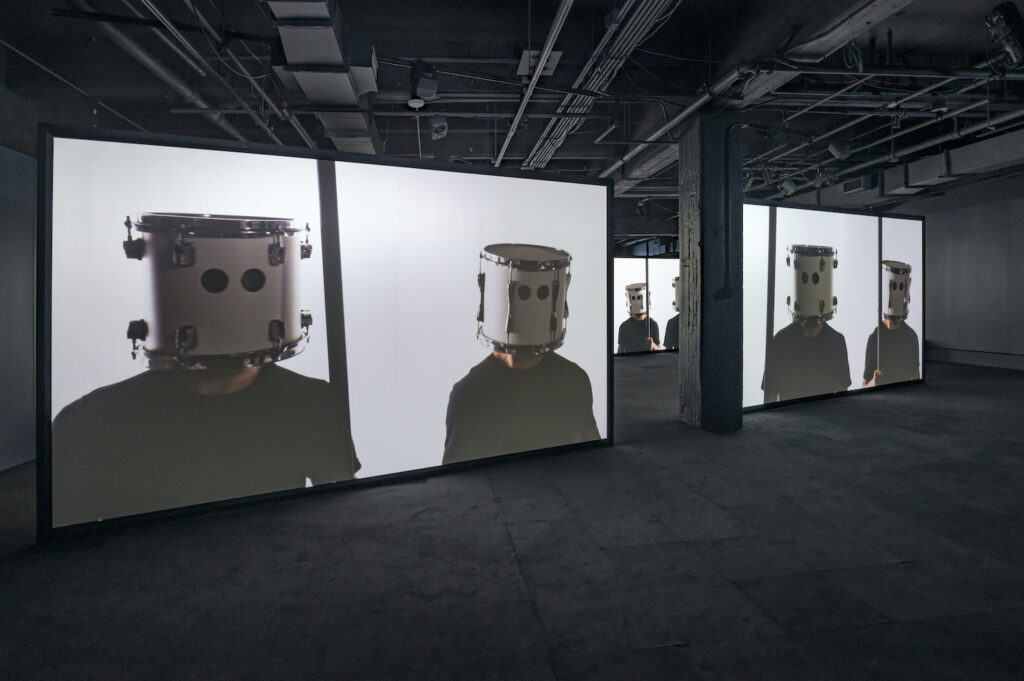
Heads Will Roll is a four-channel video installation showing a series of actions executed by collaborators (performers, musicians, and dancers) that explore the dissenting, even revolutionary, potential of noise and music. These actions, executed on, with, and around drums, pots, pans, books, and electric guitars, among other items, are edited to form a whole with a soundtrack that creates an immersive audiovisual experience, where the images are subordinated to a musical or rhythmic imperative.
The work is inspired by the spring 2012 popular protests in Québec: every evening, thousands of people surged into the street banging pots to express, festively, their discontent with the coercive measures deployed by the government of the time to quash student strikes. Noise as an expression of public contestation goes back to the late Middle Ages, but it resurfaced in Chile (cacerolazo) in 1971 and the mid-1980s, in Argentina during the banking crises of 2001-02, during protests over Spain’s participation in the invasion of Iraq in 2003, after the collapse of banks in Iceland in 2008, and most recently in Spain and Brazil (among other countries) during the lockdowns related to the COVID-19 crisis. Thus, in addition to providing the sights (and sounds) of scenes in which a percussionist performs on pots and pans, Henricks alludes to politics and ideology by orchestrating flags, books, and demonstrators in a tight, fast-paced montage that transitions from more harmonious sequences to highly chaotic or noisy scenes.
On the one hand, the work seems to offer a reflection on noise as a form of collective expression. It explores how we demonstrate, in the sense of participating in a demonstration but also in the sense of declaration, revelation, or expression. On the other hand, it highlights the way in which one individual suffers the presence of others. The figure wearing a cap/mask made from a drum, whom Henricks dubs Drumhead, looks quietly, impassively, even sadly, at the spectator as water is poured over his head. Is Drumhead the anonymous, lonesome individual, cut off from the world, who is still unaware of his potential agency? Revealingly, the helmet/mask has no opening for the mouth. It makes a sound only when hit.
Heads Will Roll develops approaches found also in the video installation Unwriting (2010), recently acquired by the MAC and presented in its galleries in 2021. This work evokes the difficulties involved in expressing an idea by using words; in passing from the abstract to the concrete; in externalizing something internal; and, as the artist says about the work, in passing from “the beauty of thinking a thought” to “the beauty of rendering a thought through words.” Indeed, this reflection on writer’s block weaves together texts, sounds, and images associated with writing on an undefined white background. The work, also deployed on four screens, starts – as does Heads Will Roll – with a call to attention: a closeup on hands producing a rhythm; the image quickly multiplies and goes out of phase. But Heads Will Roll displaces (dislocates) the premise of Unwriting. Whereas the earlier work raises the question of pitfalls and false starts that affect the solitary author, the more recent work raises, as mentioned above, the question of collective expression: how does a group come to reveal something that goes beyond the sum of the specific perspectives of the individuals who form it?
Photos: Paul Litherland
